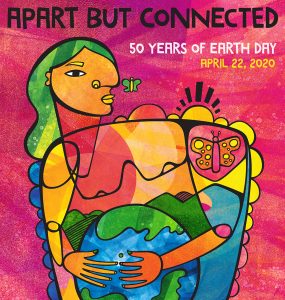By Angela Villanueva
LatinaLista
Corpus Christi native, Suzie Canales, encounters federal bureaucracy, frustration and roadblocks in finding solutions to help her local neighborhoods impacted by environmental abuses.
For more than 10 years, Suzie Canales, 51, has been fighting for a clean environment in the Texas coastal town of Corpus Christi. Through her position as the executive director of Citizens for Environmental Justice (CFEJ), Canales has drawn nationwide attention to the suffering that exists in those Corpus Christi neighborhoods exposed to pollutants and chemical wastes.
Yet getting the federal, state or local authorities to do something about it has not been an easy journey for Canales, who wasn’t always an environmental activist.
This chapter of her life didn’t begin until she returned home to Corpus after traveling the United States for 20 years as a Navy wife and mother.
It was when she arrived home that she discovered her sister, Diana, was very sick with breast cancer. It wasn’t long before Diana died; she was 42-years-old.
Acting on gut instinct that the city’s increasing pollution and usage of hazardous chemicals had something to do with her sister’s death, Canales founded CFEJ and organized a team of researchers to analyze the connection between the city’s pollution and cancer deaths among residents.
What was found shocked them all.
Uncovering city planning and zoning commission documents, Canales learned a dirty secret of the city — people were relegated to certain neighborhoods of Corpus because of their color and race.
“It was clear that people of color were restricted by zoning ordinances to live in undesirable areas near hazardous waste sites and dangerous pipelines,” Canales said.
After further research, CFEJ found that the hazardous chemicals around the area might indeed be the cause of cancer and other health problems.
“It’s hard to prove that the industries are the ones causing the (birth) defects and it’s certainly hard to pin-point the cause of cancer, but it’s safe to assume that they are a contributing factor,” Canales said. “We’re never going to prove 100 percent that they are the ones causing it but it is obvious that they are the ones with all the chemicals.”
Canales’ goal is to move all the people living around the hazardous areas out of the city, but so far she hasn’t received much support from the government. In 2007, CFEJ petitioned the Environmental Protection Agency (EPA) for funds to help do something about the hazard but most of the petition was denied.
“We’re asking the government and city to care about the people,” Canales explained. “They’re in imminent danger and the fenceline communities that want to relocate to safety should have that option made available to them with help for financing. Most people can’t afford to move.”
Canales got the opportunity to share her concerns in Washington when she attended the first-ever White House Forum on Environmental Justice in December 2010. Her frustration at the event led to an impromptu meeting with the U.S. EPA Administrator Lisa Jackson who listened, along with a New York Times reporter, to Canales detail the lack of federal support for her Corpus communities. At the end of the conversation, Canales presented Jackson with a report she had written titled, “Why EPA’s attempts to achieve environmental justice have failed and what they can do about it.”
While her conversation with Jackson didn’t alleviate her frustration, the eavesdropping New York Times reporter wrote up the encounter and published it. Now, Canales’ efforts are known nationwide.
Though Canales’ goal is to seek justice and solutions that can help those neighborhoods impacted by environmental abuse, she finds that her quest for justice only turns up more disturbing information.
In reviewing the city’s birth defect rates, Canales and her team were dumbfounded at the startling numbers. According to the CFEJ website, “The results were alarming with many people reporting hysterectomies at young ages, birth defects, cancer and other health problems.”
CFEJ asked state and federal agencies to investigate the disturbing rates but federal agencies only took perfunctory tests and determined that there was no evidence of hazardous dumpsites causing any illnesses or birth defects.
Dissatisfied with the federal government’s findings, CFEJ took the matter into their own hands. They carried out an extensive investigation themselves with their own money and discovered, among other things, that the area Canales had grown up in had once been used for oil/gas production.
These days, Canales, unfortunately, doesn’t see an end to the work she started over ten years ago to find the cause of her sister’s untimely death.
“I would like to see the EPA do what they said they were going to do,” said Canales frustrated.
“Our biggest obstacle is the government.”
Angela Villanueva is a journalism student and Latina Lista intern from the University of Texas-Pan American in Edinburg, Texas.





